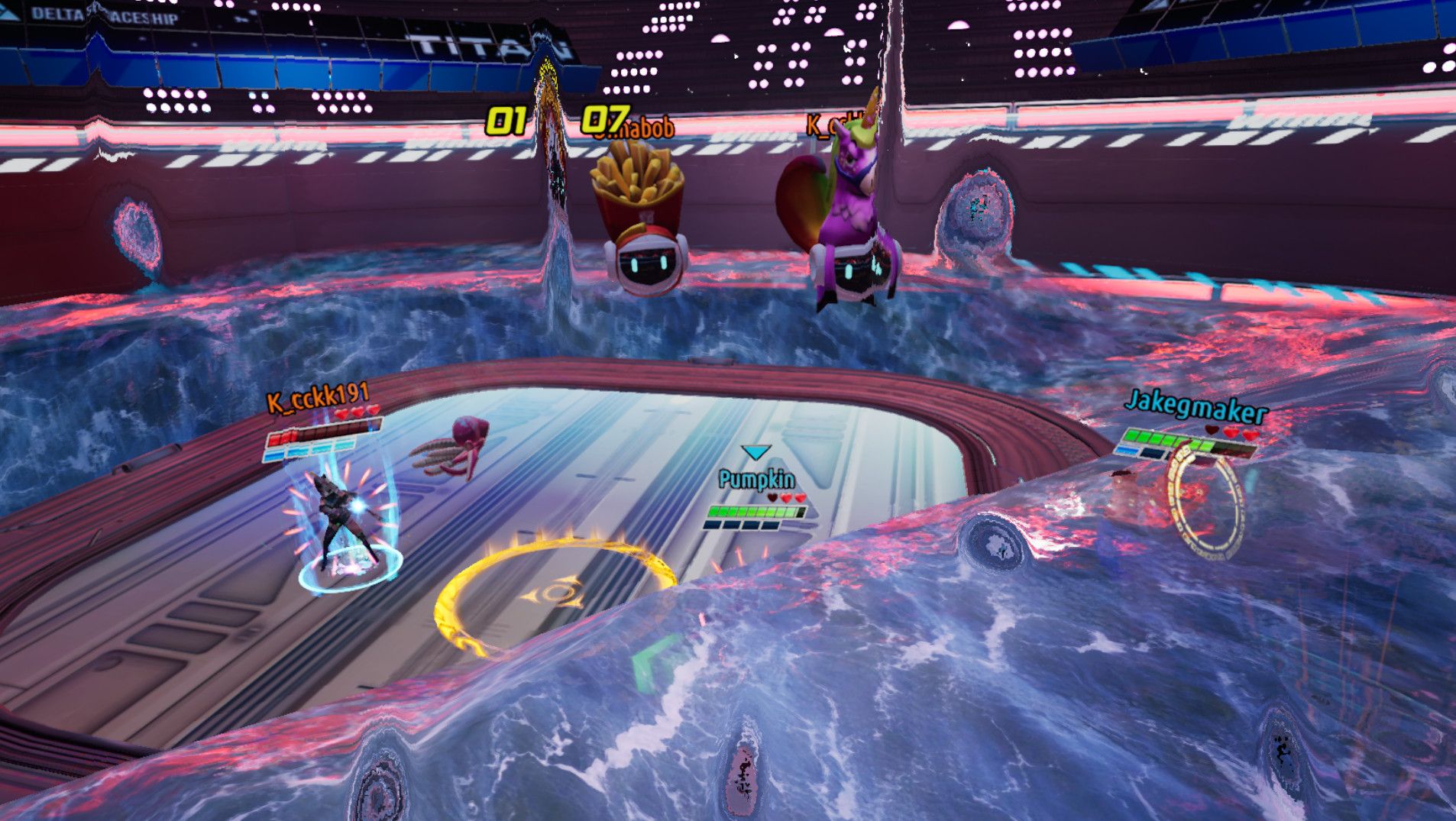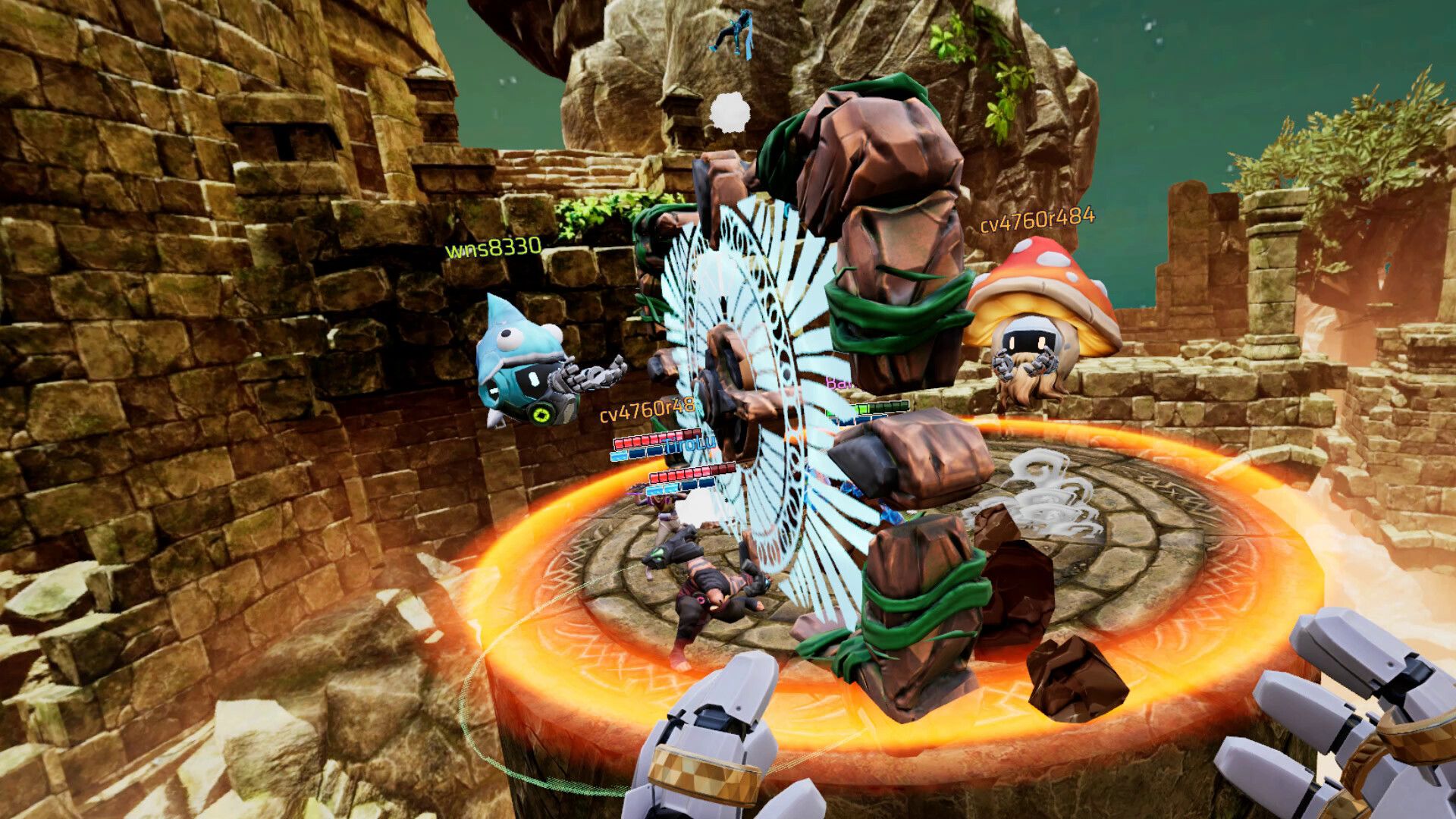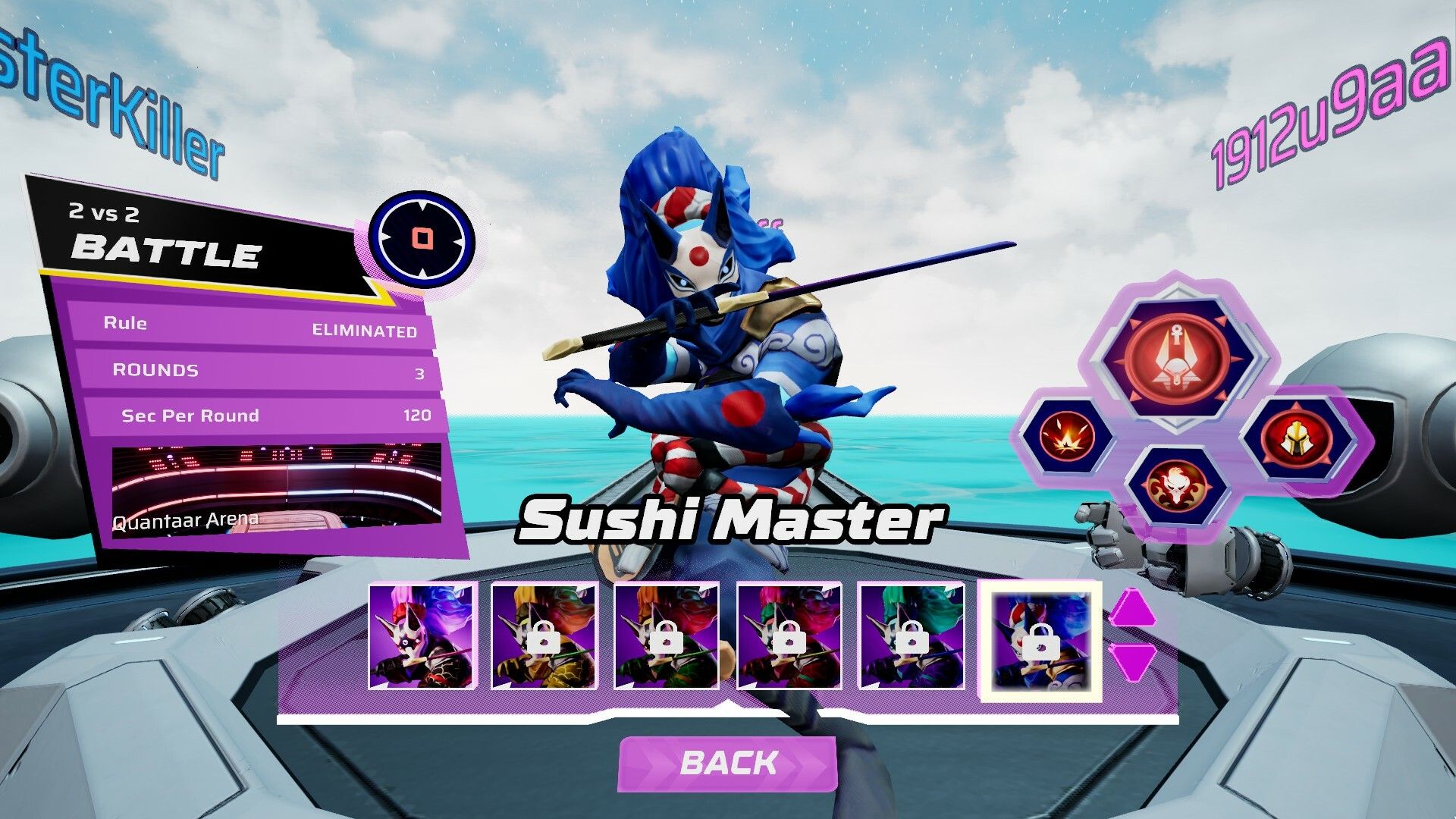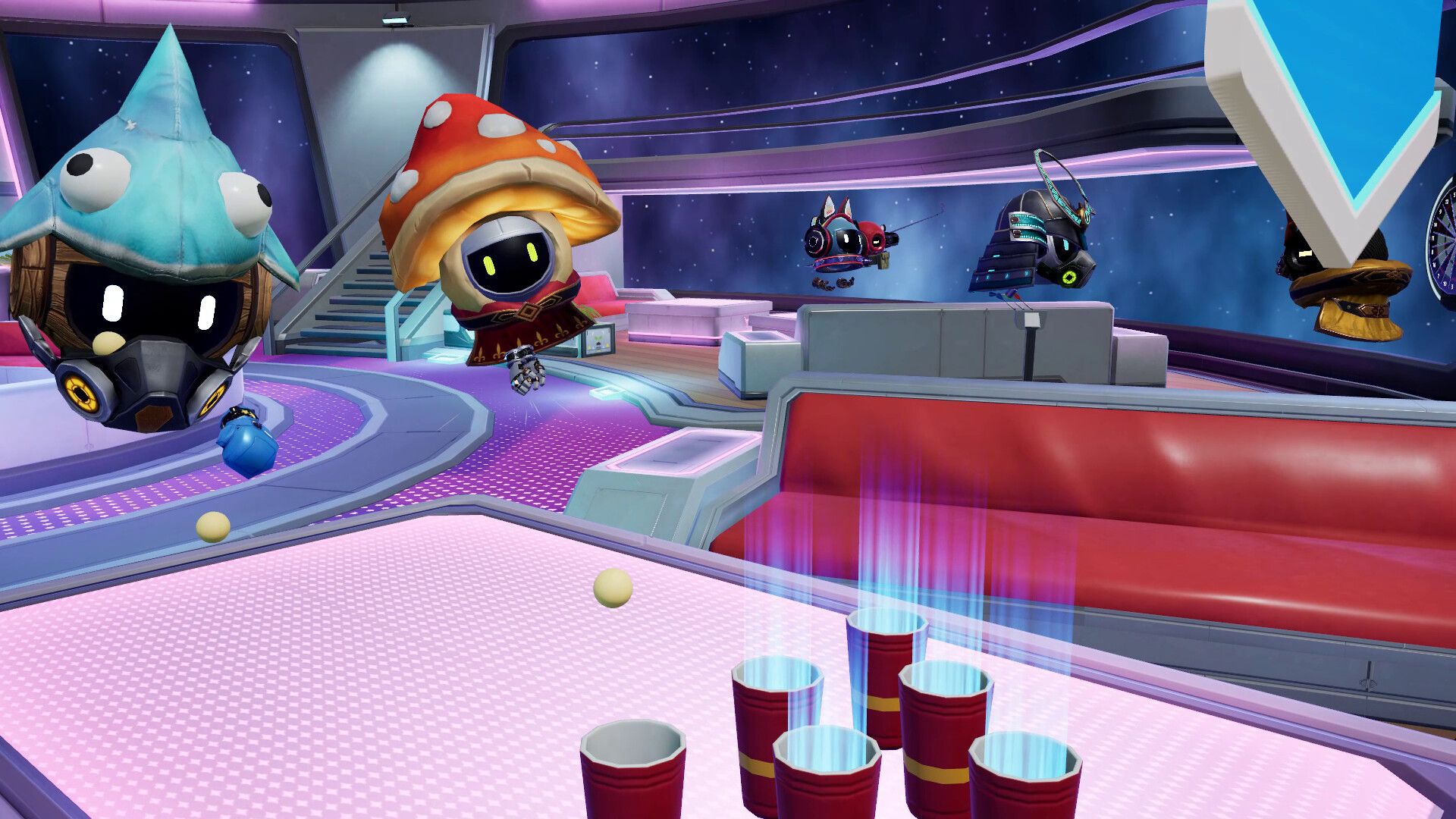While Quantaar is a new multiplayer VR fighter and takes inspiration from Smash Bros. and other classics, it's more ambitious than it can handle.
Released earlier this month at Quest's App Lab, Quantaar borrows elements from games like Smash Bros., Power Stone, and SoulCalibur in order to bring a competitive vibe to multiplayer fighting action games for VR. While it sounds like a combination of some great multiplayer games, that doesn't mean Quantaar is an immediate success.
Unfortunately, it's more of a port that fails to take full advantage of VR's unique strengths than an overall new beginning in the VR fighting game space. The game's multiplayer mode is impressive, but a large portion of the game, including the core gameplay loop, falls short of expectations, which may explain why the game was released on the App Lab rather than the main Quest store.
Quantaar Review - Details
platform:通过App Lab的Quest、PC VR、PICO 4(评测基于Quest平台)
release date:Now online
Developer:Pumpkin VR
price:Free Play
If you're familiar with platform or competitive fighting games, then you certainly understand Quantaar's gameplay setup: hit your opponents until they run out of life points, or do your best to knock them out of the arena - at least in Quantaar's main modes: brawl and 2v2. There's also a soccer mode, but more on that later.

game mode
Melee is a standard free-for-all mode with few restrictions, while the 2v2 mode is mechanically the same as Melee, except for the additional element of team battles, where players are split into two teams. Both modes fulfill the core needs of the game, though there's little to distinguish them from each other aside from the differences in team battles. While it's possible to strategically team up with teammates (especially with the included voice chat feature), matches tend to be filled with a sense of nothingness and chaos no matter which mode you play.
Adding to the sense of chaos are the game's props, which function similarly to those in games like Smash: they're randomly generated on the battlefield, and if your character picks up a prop, you can use it to your enemy's advantage. It's a predictable plot, and props like bombs can help you defeat your opponents. However, unlike Smash Bros. your character doesn't use props. Instead, you can throw them in - at the press of a button, an indicator shows where the prop will land, and you can use the motion controls to quickly throw it. As far as I can tell, this is the only exclusive VR mechanic in the game, as opposed to other standard button-based fighting game control schemes.
In the game, you can switch between two viewpoints. One is from your character's point of view, which is locked to the outside of the field and provides a wider, bird's eye view. The other camera angle is locked behind your fighter, providing a slightly more dynamic view, more similar to a MOBA's camera. You can throw props from any viewpoint, and while the props may change the tide of the fight, they tend to land with the same ease of impotence, which is one of the factors that constrains the playable character's moves from being unsatisfying.

A real combo.
This is part of a larger problem facing the game as a whole: the Pumpkin VR developers haven't quite gotten a handle on the feel of Quantaar. Attacks aren't satisfying and rarely give a clear sense of space, both of which are necessary for this type of game to run successfully. While you can perform combos on your opponents, they don't pack much of a punch. Characters feel slightly floaty, and when you're the target of intense attacks, you're knocked out of the arena like a balloon.
The mechanic of putting attacks with a certain sense of floating is very effective in these types of games (just look at Mewtwo in the Smash games), but when every character feels like that, the results are only underwhelming. This mechanic could have been better if the character's movement, especially in the air, was more precise. Unfortunately, it's as weightless as the characters themselves.
To make matters worse, each track is effectively the same large rectangular area, with no geographically distinct points of difference, in the same mirrored environment. This means that if the camera suddenly stops cooperating - which is what sometimes happens after your character is knocked off the ground - finding orientation and getting back on the track will be extremely difficult.

Further adding to the sense of confusion is the relative youth of the game. There's not too much choice of playable characters, with most players starting out with access to only three characters. This means that matches, especially low ranked matches, are likely to feature multiple of the same character. Additionally, there aren't many skins to choose from and the user interface isn't well developed enough, so it's easy to lose track of who's who when putting all of the characters together in a small section of the map, especially when it's very fast.
Aside from Smash and 2v2, Soccer is the only other mode currently available. Certain characters are better suited to this extra mode than Combat, which is an interesting setup, though it doesn't seem intentional. Nonetheless, Soccer mode suffers from a similar problem to the main combat mode; the attacks don't feel right. Hitting an oversized ball with a power attack has almost the same effect as crashing into it. This helps balance out some of the characters with longer range, but is a missed opportunity to liven up this mode and make it stand out from the pack.

Multiplayer lives or dies not only in the core gameplay loop, but also in the multiplayer suite and support. Fortunately, this is where Quantaar excels above all else. The menus are clean and fluid, quickly bringing you to your target. The multiplayer and social lobbies are also well crafted. There's a whole space within the game for players to walk around, and it's clear that it's designed to accommodate more players than I've ever seen in a game. The social space also offers some fun and interactive activities (such as a bowling and music venue), all of which show Pumpkin VR's goals for Quantaar. It's exciting to see a studio focus on well-curated social spaces that work in games.
Quantaar Review - Final Verdict
Despite my many criticisms of Quantaar, I still enjoy playing the game and it's a well-functioning option on the App Lab. Unfortunately, while the game's shortcomings may be relatively minor in nature, it does detract from what it's really trying to do. After some time and improvements to VR Pumpkin, I can easily see Quantaar potentially becoming a very special game, especially if the studio is able to support it over the long haul with ongoing updates.
While character and mechanic improvements are necessary, what I'd really like to see in the future is gameplay that adds a sense of vigor and dynamism. Right now, Quantaar has few elements that make it suitable for VR. While the energy-filled camera movement and special effects of Smash may not be possible in VR, there are opportunities to enhance immersion that Quantaar just doesn't capitalize on. These battles are supposed to be a showdown between cosmic gladiators, yet no one feels like there's an audience watching. Even if the gameplay of this genre is inherently unsuitable for headset devices, the immersive potential is still fully utilized.
In the future, I can see myself jumping into Quantaar for a night or two for some self-scheduled matchmaking with friends. However, the core mechanics aren't quite ready yet.




